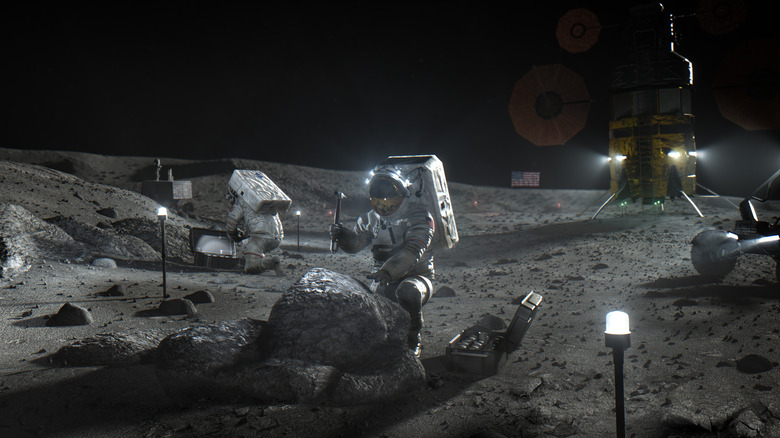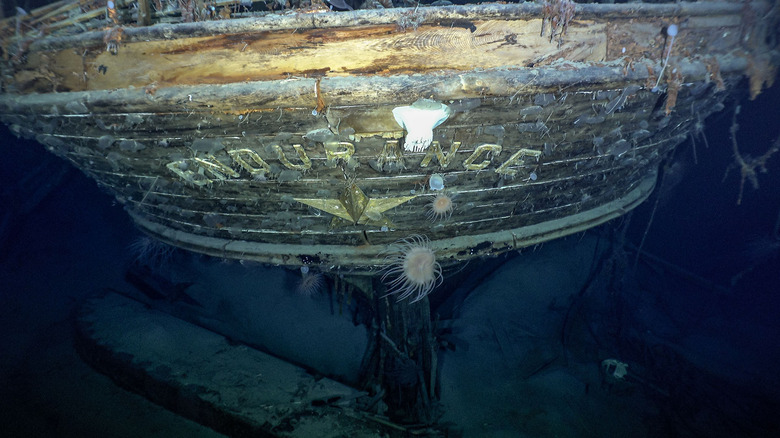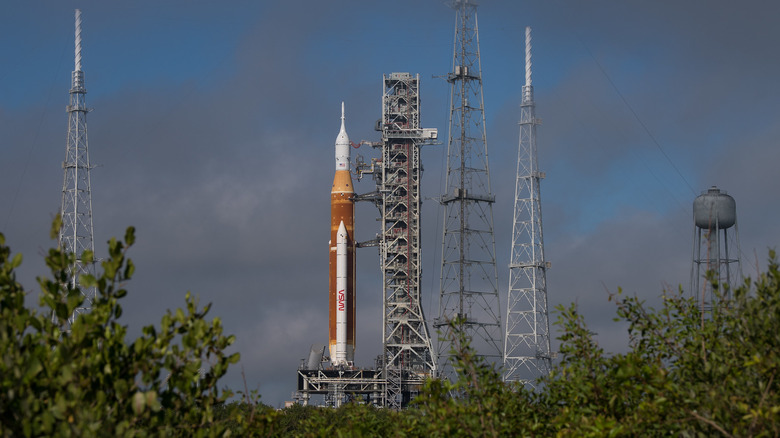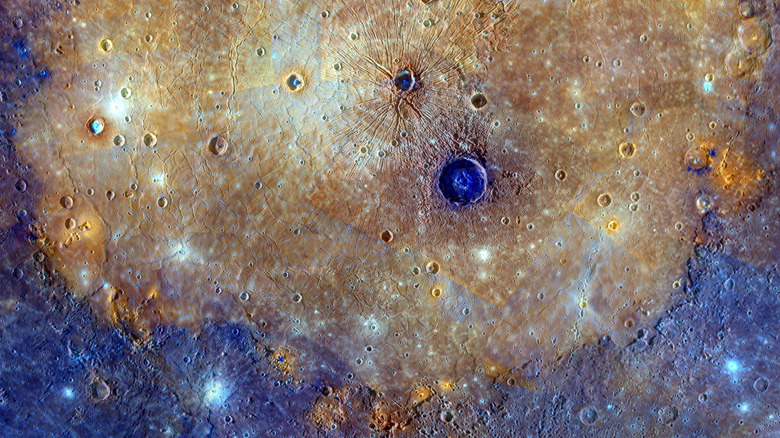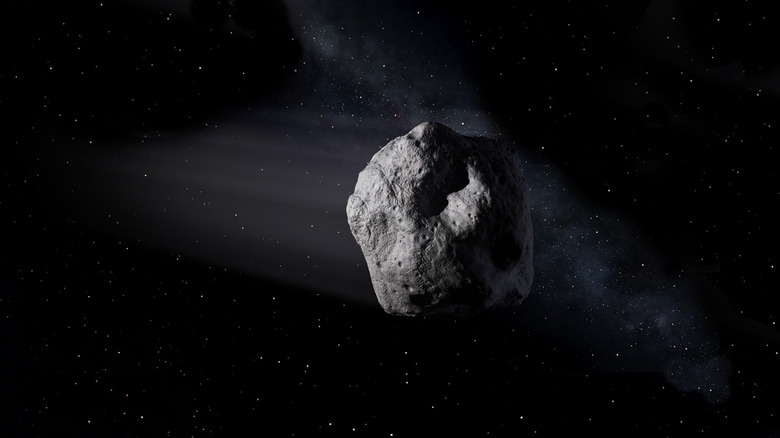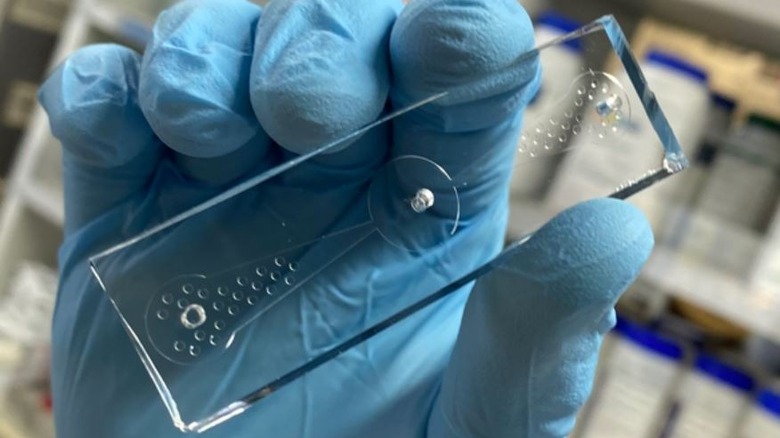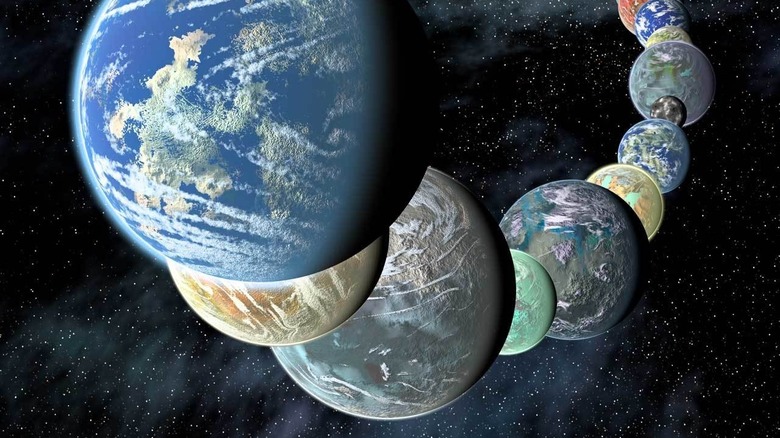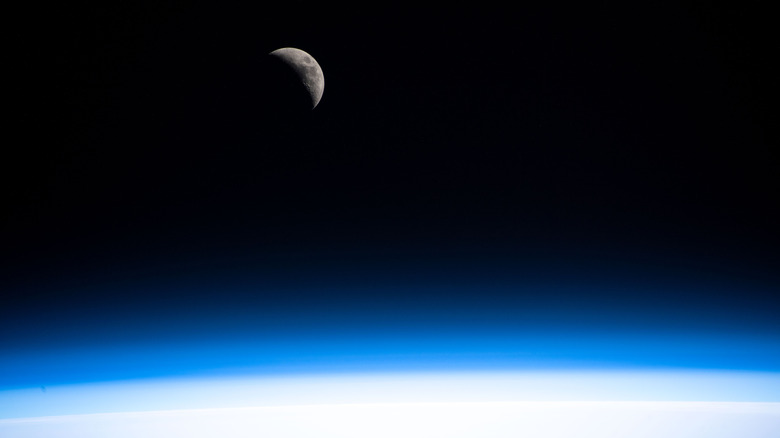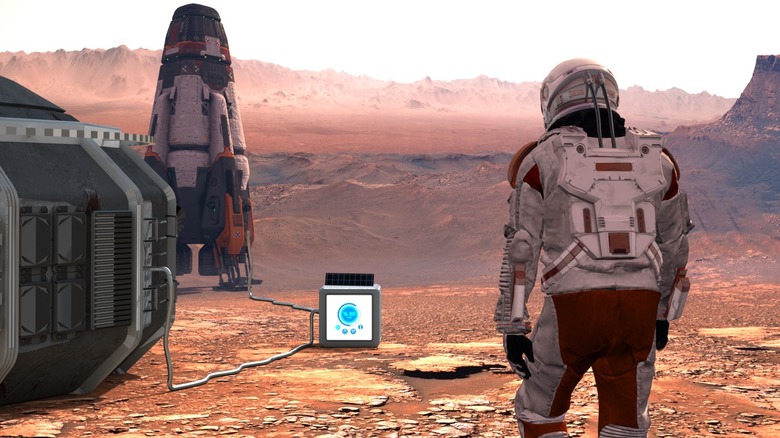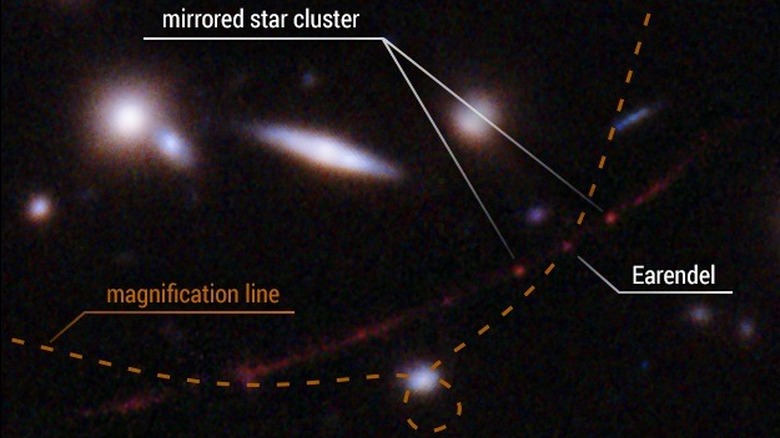The 12 Coolest Scientific Discoveries Of March 2022
Every day the world keeps turning, orbiting around our parent star, and slowly churning around the center of our galaxy according to the laws of motion. Those laws weren't always known. In fact, in the grand scheme of the human experiment, they're practically breaking news. That's the benefit of science, its incredible ability to illuminate and change the world around us.
As most of us go about the business of living our daily lives, science continues the work of uncovering new knowledge, making new discoveries, and breaking new ground. Every day, scientists and researchers in laboratories and field sites all over the world are chipping away at the vacuum of knowledge we came into this world with.
It would be impossible for us to report every discovery, advancement, or invention made in even a single day, let alone a month, but that shouldn't stop us from trying. Science is at its best when it is understood or at least appreciated. To that end, here are twelve of the coolest scientific discoveries from March 2022.
Is Stonehenge a solar calendar?
Stonehenge has been a source of mystery and awe for centuries and there have been all kinds of explanations for how it was made and what it was for. Now, according to a recent analysis, we might finally have an answer.
Professor Timothy Darvill, an archaeologist from Bournemouth University, suggests that Stonehenge operated as a solar calendar, with parts of the structure corresponding to days or weeks.
The ancient calendar is structured slightly differently from what we might recognize today. Each of the stones represents a single day in a month and is broken up into three weeks, each consisting of ten days. That simple setup worked for day-to-day tracking, but they had to make some adjustments so that it lined up with the movements of the Sun, (per Bournemouth University).
A brief, additional "month" of only five days was added in, as well as stones to track an additional day every four years, accounting for leap year. The result is that the winter and summer solstices are framed by the same pair of stones every year. This would have given neolithic Europeans a reliable frame of reference to correct for any errors in the tracking of days throughout the year.
Underwater robots uncovered a 100-year-old shipwreck
In 1915, the ship Endurance was on an expedition across Antarctica when it vanished into the inky depths of the Weddell Sea. Luckily, the entire crew complement of 28 people survived the sinking. Despite knowing approximately where the ship went down, it remained unrecovered for more than 100 years, until now.
Finding the ship was an incredible challenge, owing in part to the less-than-ideal conditions in Antarctic waters. Sea ice covers vast portions of the frigid ocean waters, preventing explorers from using conventional investigatory methods. It seems that finding the sunken ruins of the Endurance had to wait for technology to be up to the task.
The crew of the salvage expedition, dubbed Endurance22, rode out aboard the S.A. Agulhass II, to a position where they thought they might find the ship. Once there, they deployed autonomous underwater robots called Sabertooths, which scoured the ocean floor using a laser scanner and sonar, as well as cameras to document anything they might find. And find something they did.
Once the wreck was found, the Sabertooths used their scanning instruments to build a 3D model of the ship and the nearby debris, (per Endurance22).
Artemis inches closer to its first launch
The Apollo missions first sent human beings to the lunar surface in the late '60s and early '70s, marking the most celebrated era of human spaceflight. December of 2022 will mark 50 years since the last time humans walked on another world and NASA has set its sights on returning.
The Artemis missions, so named for Apollo's twin sister in the Greek canon, were initially slated to return boots to the Moon's surface by 2024, though that timeline has since been extended. Still, the program is moving forward with the first mission on the near horizon.
Artemis I, an uncrewed test mission, will send the Orion Spacecraft around the Moon aboard NASA's new Space Launch System (SLS). The total mission will last between four to six weeks before the craft returns home. The primary objectives are testing the launch system and spacecraft, and ensuring a safe re-entry and splashdown, (per NASA). The launch is slated for some time in mid-2022.
To celebrate the upcoming mission, NASA released a one-minute trailer promising that Artemis would roll to the launchpad soon. On March 17, 2022, NASA made good on that promise. The SLS, mounted aboard the Crawler-Transporter 2 (CT-2), made its way slowly — moving at less than one mile per hour — from the Vehicle Assembly Building to its launch position at Kennedy Space Center's Launch Pad 39B (per Gizmodo).
Mercury's surface is covered in diamond dust
Mercury was once a much more violent place to be. It still isn't ideal, suffering extreme temperature variations between its day and night sides. While we wouldn't want to live there, it might be worth visiting for a little treasure hunting.
As Kevin Cannon explained at the 53rd Lunar and Planetary Science Conference (PDF Download), recent simulations of Mercury's surface and impact interactions over the last four billion years have revealed that the surface of the planet might be coated in microscopic diamonds.
Early in Mercury's formation, it was covered in a global magma ocean. Graphite formed within the magma and eventually rose to the surface, creating a floating graphite crust estimated to be hundreds of meters thick. The first billion years after the formation of the solar system were heavily punctuated with asteroid impacts, each of which could have converted that graphite instantly into diamond.
Unlike diamonds on Earth, these wouldn't be the large, clear gems we're accustomed to seeing in jewelry. Instead, microscopic diamond dust would have been scattered over the surface. Future missions to the planet could tell us more about the surface composition but if these estimates turn out to be correct, Mercury could be holding a diamond hoard sixteen times larger than Earth's.
Asteroid discovered two hours before impact
Speaking of asteroid impacts, one struck the Earth on March 11, 2022. Luckily for all of us, it wasn't a planet-killing object the likes of which populate movie plots and murder dinosaurs. 2020 EB5 was only about 6.5 feet in diameter and burned up in the atmosphere off the coast of Greenland.
2020 EB5 marks only the fifth time astronomers have detected an impactor before it struck the planet. Objects of that size aren't all that rare in the solar system and they cross paths with our planet fairly regularly. Their small size makes them exceedingly difficult to detect in advance both because the search area extends infinitely in every direction and because they are comparatively faint.
Larger objects impacting the planet could have serious consequences for humanity and the rest of the life on Earth, so NASA takes the mission of finding and tracking them very seriously. The Center for Near Earth Object Studies at NASA's Jet Propulsion Laboratory is tasked with keeping an eye on the skies for any interplanetary threats and was involved in tracking 2020 EB5 after its initial discovery by astronomers at the Piszkéstető Observatory.
If something larger ever comes our way, let's hope we have more than two hours' warning.
Cancer sniffing worms
Detecting diseases like cancers is often critical for a good prognosis. Cancers, in particular, have drastically improved survival rates if they are detected early, so doctors and scientists are always looking for better screening methods. The latest addition to the diagnostician's tool best is a small piece of plastic filled with worms. Specifically, the nematode C. elegans.
Medical technology, testing, and treatment have improved drastically over the last several decades but, as with most things, anything we can do nature can do better. Nematodes are relatively simple creatures, so simple that they are a favored model organism for all kinds of research (per NCBI), but they have an advanced sense of smell which they use to navigate the world. That sense of smell is apparently fine-tuned for sniffing out certain types of cancers.
Researchers working with the National Research Foundation of Korea put the worms to work detecting cultured lung cancer cells. Their device, which they call "worm-on-a-chip" consists of a small rectangular piece of elastomer with a chamber carved out of its interior. The worms are placed in the middle and have the option to travel down one of two paths. On one end there are healthy cells, on the other end, the cells are cancerous. Researchers found that the worms successfully moved toward the cancerous sample about 70% of the time.
More research is needed but the worm-on-a-chip could provide fast and accurate preliminary diagnoses in the future.
Exoplanet research hit a major milestone
The practice of searching for planets outside of our solar system is a relatively new development in astronomy. In fact, the very first confirmed exoplanet was only discovered in 1992, (per Space). Despite exoplanet discovery still being in its infancy, the field has grown rapidly.
Telescopes like Hubble, TRAPPIST, and more recently the JWST, have allowed humanity to peer farther into our universe and further back in time than ever before. With solid tools and constantly improving detection methods and practices, the number of confirmed exoplanets has climbed steadily, such that planets are no longer added to the registry individually but in batches.
On March 21, 2022, NASA received the latest batch of confirmed planets. Confirmation typically requires multiple observations to ensure they weren't an anomaly or experimental error. The batch included a total of 65 new worlds, enough to push the overall exoplanet count over 5,000.
A sizable portion of the exoplanets we've discovered to date are what are known as hot Jupiter's, gas giants orbiting close to their parent star. Though, that appears to be a consequence of our observation techniques and not necessarily representative of the types of planets which are most common. We've also uncovered so-called super Earths, and mini-Neptunes, among other exotic planetary types, (per NASA). At the current rate, we'll reach the 10,000-planet mark before we know it.
The Moon could detect gravitational waves
Gravitational waves were first hypothesized by Albert Einstein as part of his general theory of relativity, but they weren't observed until 2015, (per NASA). Instruments like the Laser Interferometer Gravitational-Wave Observatory (LIGO) use lasers to detect gravitational waves from violent cosmic events, like the collision of two black holes.
Interferometers work by running two lasers perpendicular to one another and measuring interference patterns in the light waves as they bounce back and forth along their path. Under ordinary circumstances, the pattern remains the same, but a change in the distance between two points of the instrument causes fluctuations in the wave patterns, and these can be detected.
One way to mess with the patterns is to physically meddle with the machine, but that doesn't tell us much about the nature of the universe. Another way to change the distance is to literally stretch or squash space-time, and that's what happens when gravitational waves propagate over the instruments.
Tools like LIGO, advanced though they may be, are limited as to the frequencies they are able to detect and that's where the Moon comes in. As explained in a paper published in the journal Physical Review Letters, scientists have proposed turning the Moon-Earth system into a giant interferometer by bouncing lasers off mirrors left on the lunar surface by Apollo astronauts.
Even minor changes in the Moon's orbit over time could reveal the presence of minute gravitational waves left over from the beginning of the universe.
ALS patient speaks using computer-brain interface
Scientists recently used a computer-brain interface to restore minimal communication an unnamed ALS patient who had lost all muscle control as a result of the disease.
Scientists and researchers have been working on a number of devices intended to use a patient's remaining mental or physical abilities and translate them into communication, restoring a voice to individuals who have lost their own. Physicist Stephen Hawking, who himself had ALS, retained the ability to move a muscle in his cheek just slightly and used that ability to manipulate a computer, construct sentences, and even write books, (per How Stuff Works). However, many ALS patients don't retain any muscle movement, so scientists needed to come up with another solution.
According to a paper published in the journal Nature Communications, electrode arrays were implanted in the patient's brain and the system was trained to recognize activity in nearby nerves. The patient manipulated a computer by activating those nerves, reportedly by trying to move his eye, in order to answer yes or no questions and painstakingly spell out sentences.
The process was slow going on the order of a single character per minute, but he was able to make simple requests and express affection for his family. There's a long way to go before these interfaces become widely available but being able to tell your family you love them again is an unequivocal win.
Today's astronaut waste is tomorrow's Martian fuel
Getting anything into space is both technologically challenging and wildly expensive. Even with recent advances, like reusable rocket boosters, it costs thousands of dollars for every kilogram sent off planet (per The Conversation).
That's why astronauts heading to the space station don't take a lot of water with them. The station is designed to recover nearly all of the water onboard, filter it, and reuse it. That's the mentality space agencies are taking into the next phase of human space exploration. A Mars mission could last roughly two years round trip, and every kilogram of water or fuel you have to carry in advance makes it harder to pull off.
To that end, the European Space Agency (ESA) is partnering with technology firm Tekniker to develop a novel reactor for turning astronaut waste products into fuel. The system would gather carbon dioxide from the Martian atmosphere and combine it with gray water — astronaut wastewater — to produce methane and other hydrocarbons.
Crucially, the system will also purify the water and return it back to the astronauts, so future spacefarers are getting double the return on their biological investment. Less water will need to be sent with any crew heading to the red planet and they'll get some bonus fuel for their trouble.
The dangers of doom scrolling
Many of us have experienced a personal sense that increased time on social media sites results in an overall decrease in our happiness, and now there's science to back that up.
A recent study from the Oxford Internet Institute looked at the emotional health of 80,000 volunteers across various age and gender demographics to get a sense for how social media usage impacted their level of happiness.
Perhaps unsurprisingly, they found that longer time frames spent scrolling social media correlated with lower happiness. As explained by the University of Oxford, the age ranges at which different demographics experienced the highest negative consequences varied, but the overall impact was clear. Using social media, particularly at higher rates, shows a strong link with negative emotional responses.
So far, it's unclear what the exact mechanism is behind the emotional response. Whether it's the comparison between an individual's lived experiences and our peer's well-crafted highlight reels, or just the general malaise which comes with doom scrolling the negativity social media tends to promote is unknown. In either case, the result is the same. If you're feeling bad, log off.
Hubble sees deeper into the past than ever before
The oldest star that the Hubble Space Telescope has ever been able to see was burning in the night sky roughly four billion years after the birth of the universe. At least, that was true until March 2020 when, through a combination of Hubble's incredible technology and an assist from the universe, that record was shattered.
As explained by NASA, Hubble pointed its orbiting eye in the vicinity of a massive galaxy cluster known as WHL0137-08 and got more than it bargained for. The cluster is so huge and carries so much mass that it bends space and time around it, causing light to curve as if going through a magnifying glass.
This phenomenon, well-known to astronomers, is called gravitational lensing. Essentially, that lensing effect grabbed hold of a star that is by all accounts outside of Hubble's visible range and pulled it several billion light-years closer. To be clear, the star—which was nicknamed Earendel by astronomers—wasn't actually moved and is in all likelihood dead and gone, but its light is still racing toward us and through a happy cosmic coincidence we were able to look at it.
The James Webb Space Telescope, which launched on Christmas Day 2021, is just about finished setting up shop at the L2 Lagrange point and astronomers are planning to point it at the star to learn more about it.
